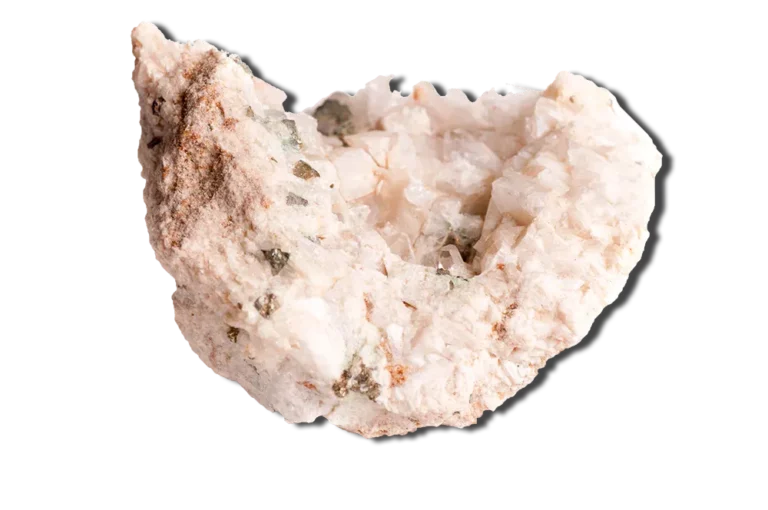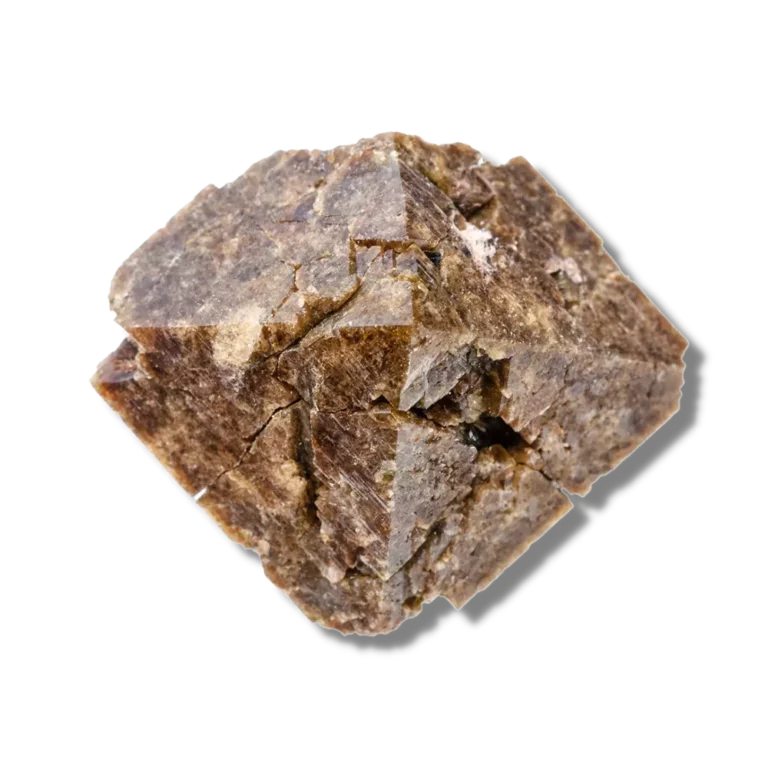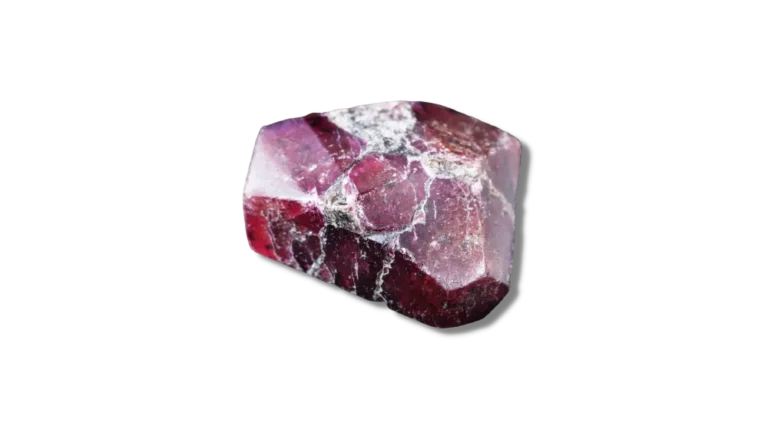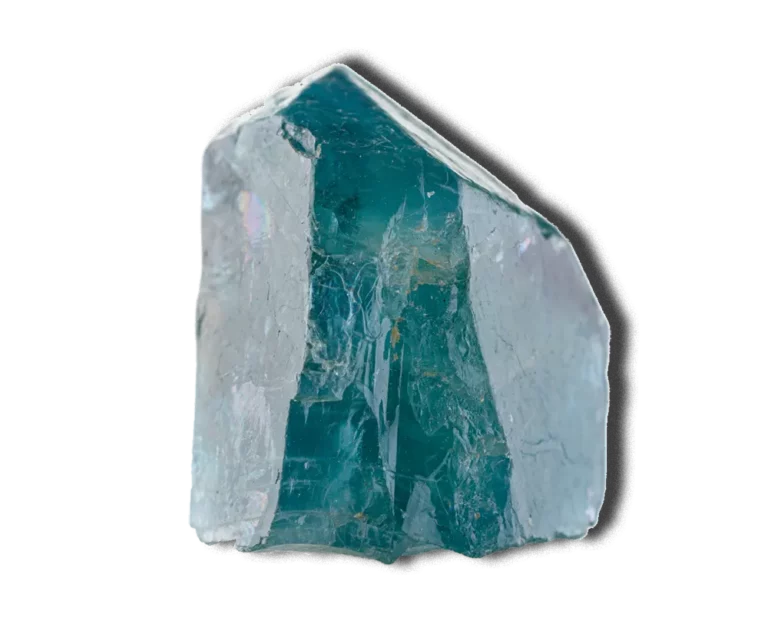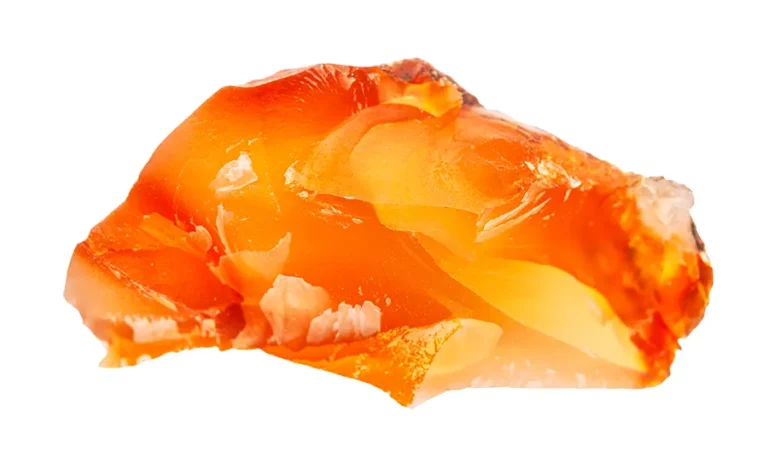Sodalite: Properties, Benefits & Meanings
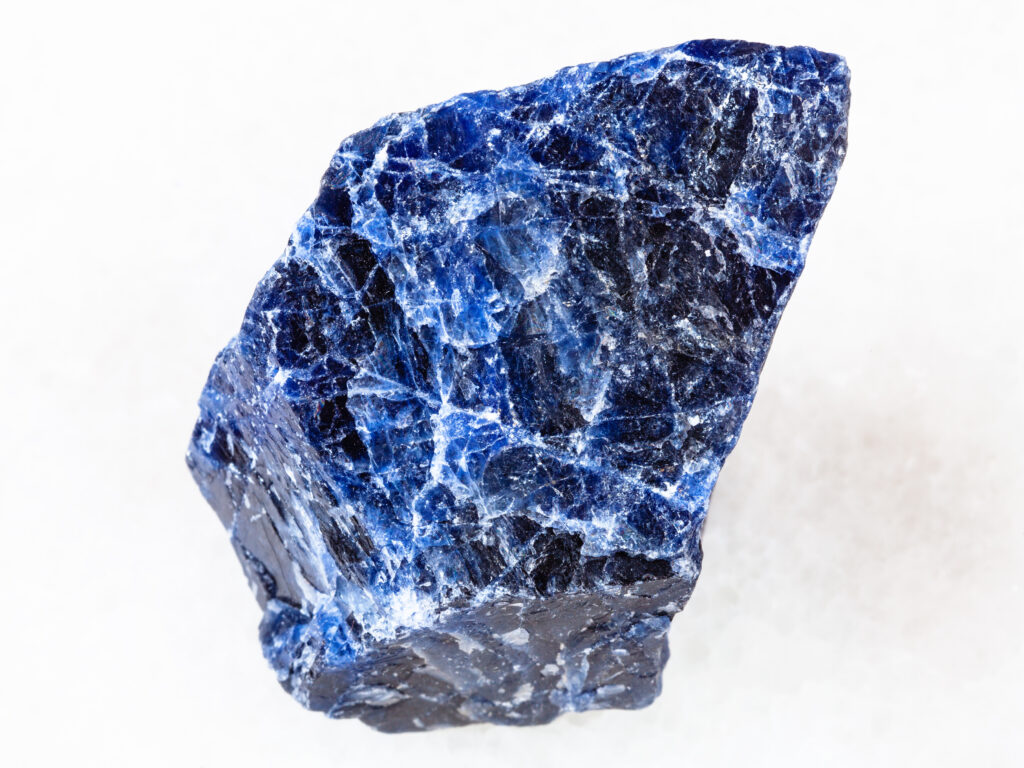
Sodalite Overview
Sodalite is a beautiful blue mineral that is often used in jewelry and other decorative items. It is known for its calming, peaceful energy and is believed to be connected to the throat chakra, which is associated with communication and self-expression.
Sodalite is often said to symbolize truth, wisdom, and inner peace and is thought to be a helpful stone for those seeking to increase their self-awareness and understanding. This article will take a look into the properties, meanings, and uses of the sodalite stone.
What is Sodalite?
Sodalite is a blue-colored mineral that is a member of the sodalite group, which also includes lazurite and hauyne.
This stone is prized for its striking color and is known to be particularly effective at helping to clear the mind and improve focus. Whether you’re looking to add a touch of serenity to your daily life or want to enjoy the beauty of this gemstone, Sodalite is sure to be a worthwhile addition to your collection.
It is a silicate mineral that is composed of sodium, chlorine, aluminum, silicon, and oxygen. It is often used as a gemstone and is also used in the manufacturing of glass and ceramics.
Appearance
Sodalite is a mineral that is known for its deep blue color, which is caused by the presence of iron and copper in the mineral. It is typically a very consistent and uniform blue color, although some specimens may have white or gray streaks or veins.
Sodalite is typically found in massive, granular, or fibrous formations and has a Mohs hardness of 5.5-6, which makes it relatively soft and easy to cut and polish.
In addition to its deep blue color, it is also known for its high clarity and transparency. It is often found as transparent to translucent crystals, which allows light to pass through them easily and enhances their beauty.
Sodalite is also known for its vitreous, or glassy, luster, which gives it a shiny and polished appearance.
Where to find Sodalite?
Sodalite can be found in various locations worldwide. The most significant deposits of it can be found in Bolivia, Greenland, and Myanmar.
The rare variety of Sodalite, i.e., Hackmanite, is mostly found in different locations across Myanmar. A more comprehensive list of the localities where it can be found is compiled on mindat.
Physical Properties
Sodalite is a mineral that is composed of sodium, chlorine, aluminum, silicon, and oxygen. It has a chemical formula of Na4(Si3Al3)O12Cl and a Mohs hardness of 5.5 – 6.
Sodalite is typically found in massive, granular, or fibrous formations and has a vitreous, or glassy, luster. It is a blue mineral with a color that is caused by the presence of iron and copper in the mineral. It is typically a very consistent and uniform blue color, although some specimens may have white or gray streaks or veins.
In addition to its deep blue color, Sodalite is also known for its high clarity and transparency. It is often found as transparent to translucent crystals, which allows light to pass through them easily and enhances their beauty.
It has a specific gravity of 2.27 – 2.33, which means it is slightly less dense than water. It has a refractive index of 1.47 – 1.48, which means it has a moderate level of refraction or the bending of light as it passes through the mineral.
| Mineral Group | Sodalite Group |
| Formula | Na4(Si3Al3)O12Cl |
| Color | Blue |
| Hardness (Mohs scale) | 5.5 – 6 |
| Refractive Index | 1.47 – 1.48 |
| Fracture | Sub-Conchoidal |
| Luster | Dull Vitreous, Greasy |
| Specific Gravity | 2.27 – 2.33 |
| Transparency | Transparent, Translucent |

How to tell if it’s a Real sodalite stone?
There are several ways to tell if a sodalite stone is real or not.
- Color: The simplest method to determine whether it is real is to look at the stone’s color. Real Sodalite is a deep, consistent blue color with no yellow or greenish tint. Fake ones may be lighter or have a yellowish or greenish tint.
- Clarity: Another way to tell if a stone is real is to look at its clarity and transparency. Real Sodalite is typically very clear and transparent, while fake stones may be cloudy or opaque.
- Inclusions: You can also use a loupe, a small magnifying glass, to examine the stone and look for inclusions, or flaws, that are characteristic of real Sodalite.
- Professional: Finally, you can also take the stone to a jeweler or gemologist to examine and test it. These professionals have the expertise and equipment to determine a sodalite stone’s authenticity accurately.
Cost and Price
Sodalite is a moderately-priced gemstone and is often more affordable than other blue gemstones such as sapphires and lapis lazuli.
Prices can range from a few dollars per carat for lower-quality stones to several hundred dollars per carat for the finest-quality specimens.
These prices are influenced by a number of factors, including weight, cut, clarity, and color.
- Weight: The weight of a gemstone is typically measured in carats. The heavier the gemstone, the more it will generally cost.
- Cut: The cut of a gemstone refers to the way it has been shaped and polished. A well-cut gemstone will have good symmetry and balance, which can enhance its beauty and value.
- Clarity: The clarity of a gemstone refers to the presence or absence of inclusions, which are internal defects or impurities. A gemstone with fewer inclusions will generally be more valuable than one with more inclusions.
- Color: The color of a gemstone is one of the most important factors that determines its value. A gemstone with a vivid, rich color will generally be more valuable than one with a pale or dull color. In the case of Sodalite, a deep blue color is typically the most desirable and valuable.
Overall, the price of a gemstone will depend on a combination of these factors, as well as other factors such as rarity and demand.
A gemstone that is high in weight, well-cut, has good clarity, and has a rich, deep blue color will generally be more valuable than one that lacks these qualities.

Chakra Connection
Sodalite is a mineral believed to have a connection to the throat chakra, the fifth chakra located in the center of the throat.
The throat chakra is associated with communication, self-expression, and creativity and is thought to be the center of the mental body.
It is believed to have a balancing and harmonizing effect on the throat chakra and is often used in crystal healing to help open and activate this chakra.
In addition to its connection to the throat chakra, Sodalite is also believed to have a connection to the water element, which is associated with emotion, intuition, and flow.
This gemstone is thought to help bring balance and harmony to the water element and is often used in crystal healing to help connect the individual to their emotions and their intuition.
Meaning and Uses
Sodalite is a mineral that is believed to have a number of meanings and uses.
- In addition to its connection to the throat chakra and the water element, Sodalite is also associated with wisdom, logic, and truth. This makes it a powerful tool for enhancing mental clarity and helping to improve communication and self-expression.
- It is often used in crystal healing to help improve mental focus, clarity, and concentration and to promote honesty and integrity.
- It is also believed to have a calming and soothing effect and is often used to help reduce stress and anxiety.
- It is believed to have a soothing effect on the mind and emotions and is sometimes used to help promote relaxation and inner peace.
- It is also valued for its beauty and durability. It is often used in jewelry and other decorative items and is prized for its deep blue color and ability to retain its luster and shine over time.
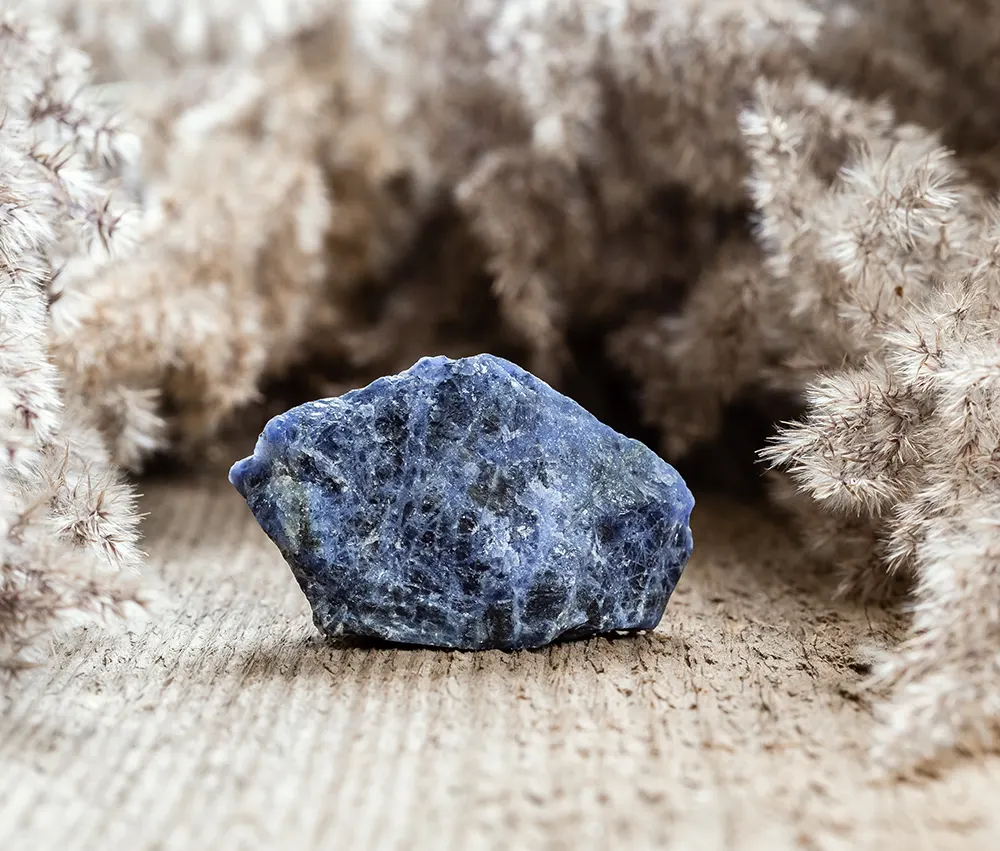
How to clean sodalite jewelry?
To clean sodalite jewelry, follow these steps:
- Mix a small amount of mild detergent, such as dish soap, with warm water in a bowl.
- Soak the jewelry in the mixture for a few minutes to loosen any dirt or grime.
- Gently scrub the stone with a soft-bristled brush, such as a toothbrush. Be sure to use a gentle touch and avoid applying too much pressure, as this can damage the gem.
- Rinse the jewelry thoroughly with warm water to remove any soap residue.
- Pat the jewelry dry with a soft, lint-free cloth.
- Allow the jewelry to air dry completely before storing it.
- Avoid exposing the jewelry to harsh chemicals, extreme temperatures, or excessive moisture, as these can damage the gemstones.
- If you need help with how to clean your jewelry, or if you have any doubts about its condition, take it to a professional jeweler or gemologist for cleaning and maintenance.
By following these steps, you can effectively clean your jewelry and help keep it looking its best.
FAQ
What gemstones go best with Sodalite?
Sodalite is a beautiful and unique gemstone that can be paired with various other gemstones to create stunning jewelry pieces.
Sodalite goes well with other blue gemstones, such as lapis lazuli, aquamarine, and turquoise. These gemstones can help to enhance the deep blue color and create a striking and vibrant look. Additionally, it can be paired with white or clear gemstones, such as diamonds or topaz, to create a more delicate and refined look.
Ultimately, the gemstones that it goes best with will depend on personal preference and the desired aesthetic of the jewelry piece. Experimenting with different gemstone combinations can help to create unique and beautiful pieces of jewelry that showcase the beauty of the Sodalite.
What is sodalite crystal good for?
Sodalite crystal is a powerful and unique gemstone that is believed to have several benefits and uses. People believe that it is good for:
1. Enhancing mental clarity, focus, and concentration
2. Promoting honesty and integrity and helping to overcome fear and guilt
3. Calming and soothing the mind and emotions and promoting relaxation and inner peace
4. Balancing and harmonizing the throat chakra and improving communication and self-expression
5. Connecting the individual to the water element and enhancing their intuition and emotional awareness
Overall, sodalite crystal is good for many spiritual uses. It is valued for its beauty, durability, and potential to enhance the mental and emotional well-being of the individual.
Is Sodalite a rare stone?
Sodalite is not considered to be a particularly rare stone. While it is less abundant and widely available than some other gemstones, it is found in several locations around the world. It is commonly used in jewelry and other decorative items.
Some varieties may be rarer than others. For example, this stone with a deep, rich blue color and high clarity may be more sought after and valuable than Sodalite with a lighter color or lower clarity.
Additionally, some types of Sodalite, such as hackmanite, may be more valuable than other varieties. Overall, the rarity of Sodalite will depend on the stone’s specific characteristics and its origin location.


